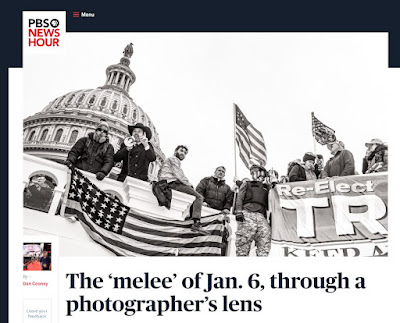January 2, 2024
This Saturday marks three years since we watched, horrified, as rioters stormed the U.S. Capitol in a failed attempt to halt the democratic process of counting electoral votes. Nearly 20 journalists were assaulted and thousands of dollars in news equipment was destroyed in the riot.
Three years after the failed attempt to halt the democratic process of counting electoral votes on Jan. 6, 2021, the Department of Justice has charged more than 1,100 people with criminal activity that day. Yet it has charged only a few of those who committed assaults on journalists, attacked as they covered the rapidly escalating events in Washington, D.C.
Nearly 20 journalists were assaulted — dragged over a wall, punched in the face or had a camera stolen. Tens of thousands of dollars in news equipment was also destroyed in the riot.
Of the six people who were charged with assaulting journalists, most were for the mob assault of Associated Press photojournalist John Minchillo, who was pushed, punched, dragged through the crowd and thrown over a wall. Four people have been charged with his assault — two pleaded guilty and were sentenced to prison; two others are working their way through the justice system.
One of the men charged in the assault of photographer Minchillo was also charged in the assault of documentary journalist Nick Quested. Quested was filming the riot from the steps of the West Plaza when the man grabbed his camera and attempted to pull him down the stairs.
New York Times photographer Erin Schaff was inside the Capitol when a crowd attacked her. In her account for the outlet, Schaff wrote that when the rioters realized she worked for the Times, they became angry, stealing and breaking her equipment: “At this point, I thought I could be killed and no one would stop them. They ripped one of my cameras away from me, broke a lens on the other and ran away.” A woman was charged with inciting the assault on the photojournalist and sentenced to prison.
Schaff’s wasn’t the only news equipment targeted by rioters. She was one of four journalists who had gear like camera lenses, broadcast cameras and recording devices damaged during their assaults.
Most large-scale harm of news equipment occurred when rioters attacked a media staging area. A Reuters cameraman was filming as rioters ripped apart the staging area, breaking news equipment, piling it up and attempting to set fire to it.
A man, later charged with destroying equipment belonging to media outlets including The Associated Press and German public-service broadcaster ZDF, tackled the Reuters journalist to the ground. He subsequently pleaded guilty to two assault charges and was sentenced to four years in prison and three years of supervised release.
Five other rioters have been charged in relation to damaging news equipment; at least one has been sentenced to pay ZDF more than $30,000 in restitution.
For 15 other journalists documenting events in and around the Capitol on Jan. 6, no criminal charges have been filed in their assaults:
Amanda Andrade-Rhoades, a freelance photojournalist on assignment for The Washington Post, was hit by crowd-control munitions fired by law enforcement multiple times.
Independent journalist Douglas Christian told the Tracker he was harassed, pursued and punched by rioters near the Russell Senate Office Building.
PBS NewsHour correspondent Lisa Desjardins told VICE News that someone grabbed her and tried to wrest her phone away.
Independent journalist Nate Gowdy told the Tracker he was standing on a railing photographing rioters storming the Capitol when a man threatened him and shoved him off.
Independent journalist John Harrington told the Tracker he was assaulted and harassed multiple times by rioters. He said he was hit in the head with what he believes was a fire extinguisher and also hit with a chair thrown by a rioter in a scuffle with police officers.
Slate reporter Aymann Ismail said he was pushed by a Capitol Police officer as a way to slow down the crowd of people behind him who were trying to force their way into the Capitol Building.
Reporter Vincent Jolly was livestreaming for Le Figaro when a man knocked his cellphone out of his hands, destroying it.
Photojournalist Chris Jones of 100 Days in Appalachia told the Tracker he was confronted by rioters inside the Capitol for being a journalist and was picked up and dragged out of the building. Later in the day, a flash-bang grenade fired by Capitol police exploded right next to him, damaging his camera pouch.
Christopher Lee, a freelance photojournalist on assignment for Time magazine, said rioters identified him as a journalist and started to grab and remove him from the Capitol.
CNN photojournalist Ronnie McCray was assaulted by a rioter who also smacked his camera.
Freelance journalist Christopher Morris said he was assaulted at least four times, with rioters “pushing, shoving, some kicking [and] pulling” on him.
VICE News cameraman Chris Olson and international correspondent Ben Solomon were attacked by several rioters on the steps of the Capitol. A man attempted to smash Olson’s camera, damaging the handle grip, and another gave Solomon a “good hard shove to the throat.”
Members of a WTTG television news crew were assaulted and harassed by a woman who was later arrested and charged with multiple criminal counts by the DOJ for her actions during the Jan. 6 riots. While the charging document describes the woman as “kicking two members of a news team” none of the charges filed were directly related to their assaults.








